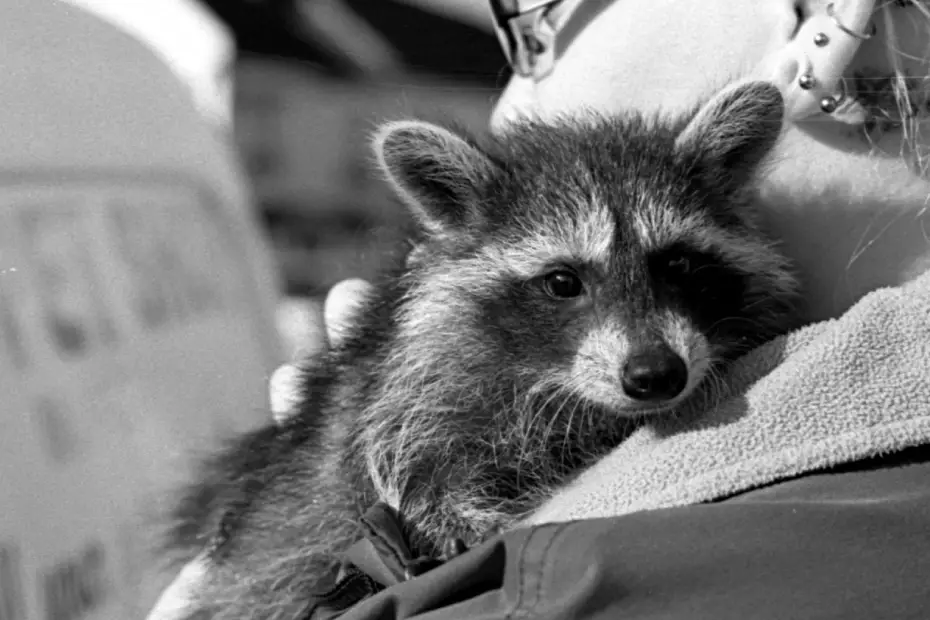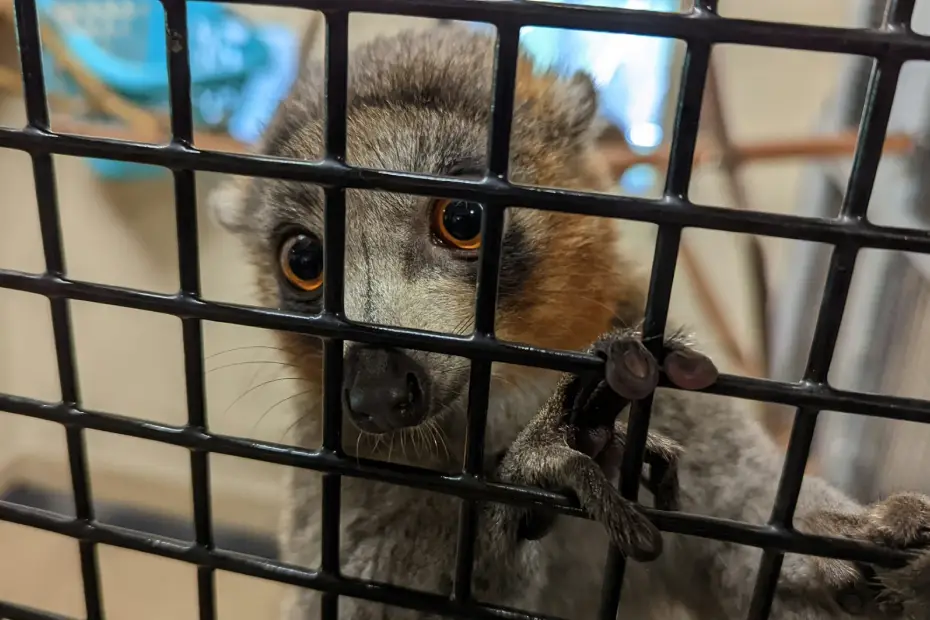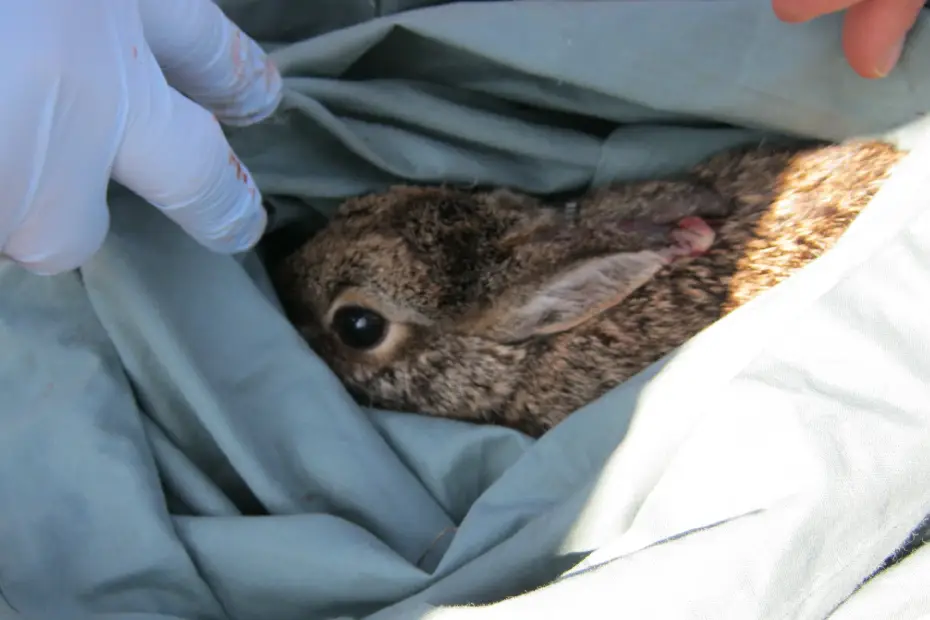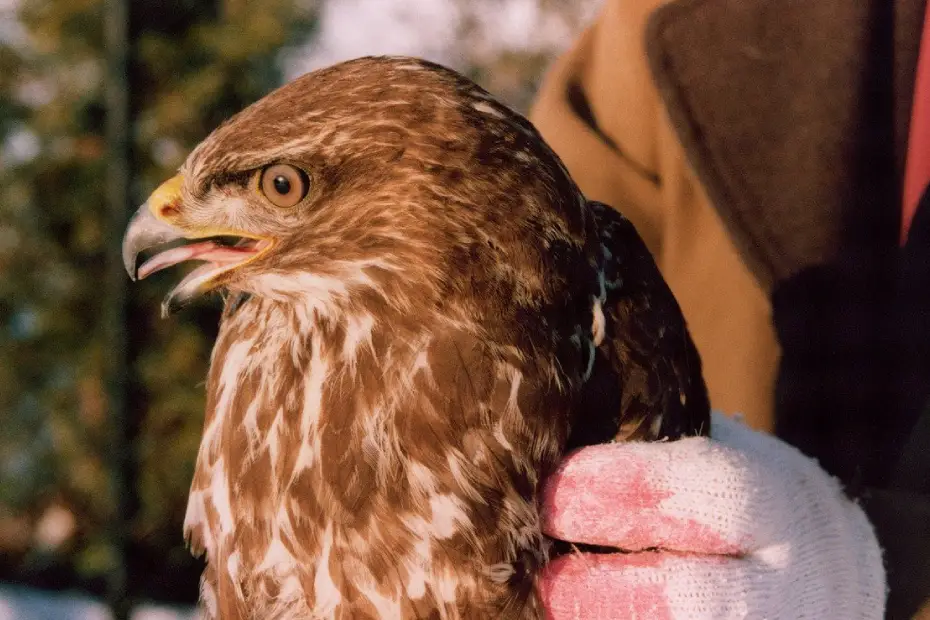Table of Contents
When we see wildlife that has been abandoned, it breaks our hearts and makes us want to lend a helping hand. This is particularly true of baby raccoons, the masked buckaroos with curious eyes and lively dispositions. The survival of a family of raccoons is at risk while their mother is absent. However, many orphaned raccoons are given a second chance at life in the wild because of the commitment of wildlife rehabilitation and kindhearted people. One such tale is this one.
The Discovery of the Orphaned Raccoons
A concerned bystander discovered a heartbreaking sight on a brisk autumn morning: a litter of small raccoons huddled together at the base of a giant oak tree, moaning and shivering. Their mother was nowhere to be seen, and it was obvious that they were too little to take care of themselves. The Good Samaritan realized these defenseless animals needed emergency assistance, so he called a nearby wildlife rehabilitation facility right away.
The rehabilitates arrived and evaluated the circumstances. The raccoons were thought to be little older than a few weeks, with hardly noticeable eyes and scant fur. Their little bodies were fragile and quivering from extreme malnourishment and dehydration. Their mother’s absence hinted at a terrible outcome—a car accident or a run-in with a predator, possibly.
The Rescue and Rehabilitation Process
With their skilled team well-versed in the delicate art of caring for orphaned raccoons, the rehabilitation facility went into action. Priority one was to stabilize the raccoons’ health. After being carefully moved to the center, they were housed in a cozy and safe enclosure. A special formula that resembled their mother’s milk was given to them in order to prevent dehydration and to supply vital nutrients.
The process of recovery is a loving endeavor that calls for perseverance, commitment, and 24-hour care. For the orphaned raccoons to survive, they needed regular food, warmth, and a secure environment. They were gradually introduced to solid foods as they were stronger, imitating the way their diet would naturally develop in the wild. Along with improving their surroundings, the rehabilitates made sure the animals had access to socialisation, climbing, and exploration—all activities that are essential to their growth and ultimate release.
There were difficulties along the way to recovery. Raccoons who are orphaned are vulnerable to a number of illnesses, including respiratory infections and parasites. When necessary, the rehabilitates promptly provide medical attention while keeping a watchful eye on their health. A careful balance had to be struck between tending to the raccoons’ needs and letting them follow their tendencies.
The Raccoons’ Journey Back to the Wild
The once-fragile raccoons had become robust, energetic young adults, prepared to return to the wild after receiving months of devoted care. A suitable release site was carefully chosen by the rehabilitation center, which made sure there would be plenty of food, water, and shelter. There was excitement and anxiety at the same time throughout the release.
The soft release was the method used by the rehabilitates to acclimate the raccoons to their new surroundings gradually. At the release site, they were first kept in a sizeable enclosure that gave them plenty of space to explore and become acquainted with their surroundings. With time, the cage was opened, allowing them to go on independent adventures while yet having a secure refuge to return to.
The raccoons adjusted to their newfound freedom quite well. As their natural instincts took over, they soon discovered how to seek food, scale trees, and navigate their domain. In order to ensure their successful reintegration into the wild population, the rehabilitates kept an eye on their progress and observed how they interacted with other species.
The Importance of Wildlife Rescue and Rehabilitation
The tale of the abandoned raccoon family emphasizes how important it is to rescue and rehabilitate wildlife. These selfless groups and people provide animals in need a lifeline and a second opportunity at survival. The advantages go well beyond the particular species.
Our efforts to save and rehabilitate wildlife help maintain the general equilibrium and well-being of the ecosystem. For example, raccoons are essential to the spread of seeds and management of pests. Their disappearance may affect insect numbers and plant diversity in a domino effect on the ecosystem.
Additionally, helping save and rehabilitate wildlife promotes empathy and a sense of belonging to the natural world. They serve as a reminder of our need to safeguard and maintain the delicate balance of our ecosystems. We actively contribute to conservation and guarantee a better future for future generations by supporting these initiatives.
How Can You Help?
There are numerous ways you can contribute to wildlife rescue and rehabilitation efforts:
- Support Local Organizations: Give to or volunteer at the wildlife rehabilitation facility in your community. Your donation has the potential to significantly impact the lives of injured and orphaned animals.
- Educate Yourself: Find out about the difficulties that the local animals faces. You may use this information to make wise decisions and take appropriate action to keep children safe.
- Prevent Orphaning: Take action to stop wildlife orphaning before it starts. Be cautious when driving, guard food sources and rubbish, and keep wildlife habitats undisturbed.
- Spread Awareness: Tell tales of successful wildlife rehabilitation and rescue. Encourage others to participate in these initiatives by bringing attention to their significance.
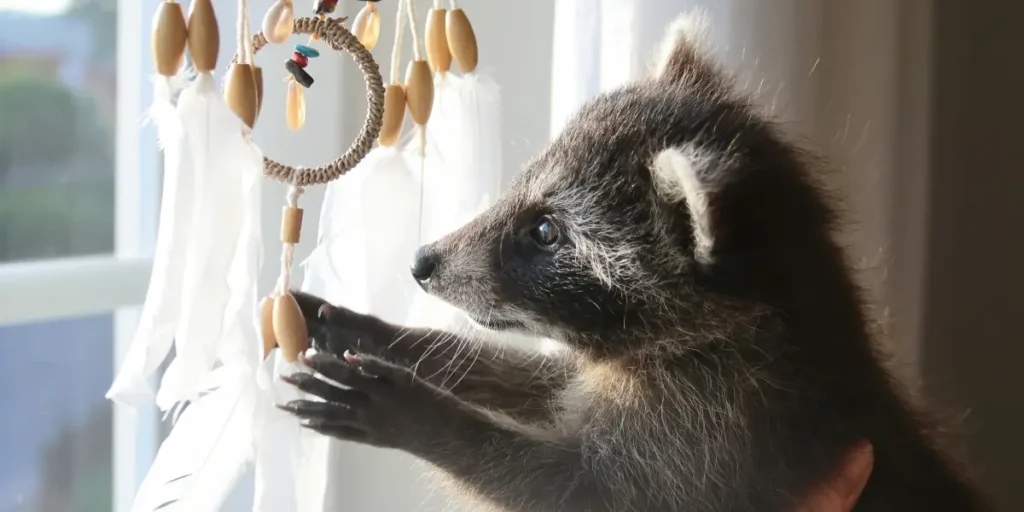
Conclusion
The tale of the abandoned raccoon family is proof of both the strength of human kindness and the tenacity of the natural world. It reminds us that all living things are deserving of our attention and defense, even the tiniest ones. We can directly improve animal lives and contribute to a more vibrant, healthy world by funding wildlife rescue and rehabilitation.
The tale of the raccoon family should stick in your mind the next time you see an injured or abandoned animal. No matter how little you do, it can have a big effect. Get in touch with a nearby wildlife rehabilitation center or group, and let’s collaborate to make sure that every animal, no matter how big or small, has an opportunity to flourish in the wild.
Common Reasons Why Raccoons Become Orphaned
The first step in stopping orphanages of raccoons is to understand why they happen. The most typical reasons consist of:
- Habitat Loss and Fragmentation: Natural habitats are being invaded by urban development, forcing raccoons to adapt to living near people. This makes it more likely that they will come across risks like traffic, traps, and confrontations with pets.
- Disease and Parasites: Raccoons are prone to a number of illnesses, including rabies and distemper, which can impair or kill them and leave their young without a parent.
- Predation: Despite their adaptability and resourcefulness, raccoons are nevertheless vulnerable to predators. Raccoons can become prey for coyotes, owls, and even big canines, especially if they are young or injured.
- Human Intervention: Regrettably, raccoon orphaning can also result from human activity. Poisoning, whether deliberate or accidental, moving, and trapping can all take moms and their babies away.
Challenges of Raising Orphaned Raccoons
The work of raising orphaned raccoons is difficult and intricate. It takes a substantial time investment, resources, and specialist understanding. Among the principal difficulties are:
- Providing Adequate Nutrition: Raccoon pups need a particular diet that closely resembles their mother’s milk. It might be difficult to duplicate this, and poor nutrition can cause health issues.
- Mimicking Natural Behaviours: Raccoons are gregarious and extremely intelligent animals. They need to be given the chance to engage in activities that come naturally to them, such as climbing, foraging, and socialising with other members of their kind.
- Preventing Imprinting: Preventing imprinting is essential to prevent raccoons from becoming overly dependent on people. This may make it more difficult for them to survive in the wild.
- Preparing for Release: Raccoon releases back into the wild need to be planned and executed with precision. Before releasing them into an appropriate environment, rehabilitates must make sure they are in good health and have acquired the required skills.
Success Rates of Raccoon Rehabilitation
The age and health of the raccoons when they are rescued, the standard of care they receive, and the suitability of their release place are some of the variables that affect the success rates of raccoon rehabilitation. However, research indicates that a sizeable percentage of orphaned raccoons can be successfully reintroduced into the wild with the right care and rehabilitation.
Legal Implications of Rescuing and Rehabilitating Wildlife
Understanding the legal ramifications of saving and rehabilitating wildlife is crucial. It is forbidden to own or transport wildlife without a permit in many places. It is preferable to get in touch with a certified wildlife rehabilitator who has the required licenses and experience to manage the problem if you come across an injured or orphaned raccoon.
Preventing Raccoon Orphaning
When it comes to safeguarding raccoons and other wildlife, prevention is essential. The following easy actions can be taken to lessen the likelihood of raccoon orphaning:
- Secure Trash and Food Sources: Because raccoons are drawn to food, it’s critical to keep pet food, compost bins, and garbage cans secured to prevent them from coming to your home.
- Drive Cautiously: Raccoon activity peaks at dawn and dusk, so be extra cautious at these times. When crossing the road, slow down and keep an eye out for wildlife.
- Respect Wildlife Habitats: Steer clear of disrupting natural environments, particularly when it’s breeding or nesting season.
- Educate Others: Raise public awareness of the value of protecting wildlife and the actions that individuals may take to keep raccoons and other animals safe.
By being proactive, we can contribute to a decrease in the number of raccoons that become orphans and guarantee the survival of these amazing animals in the wild.
